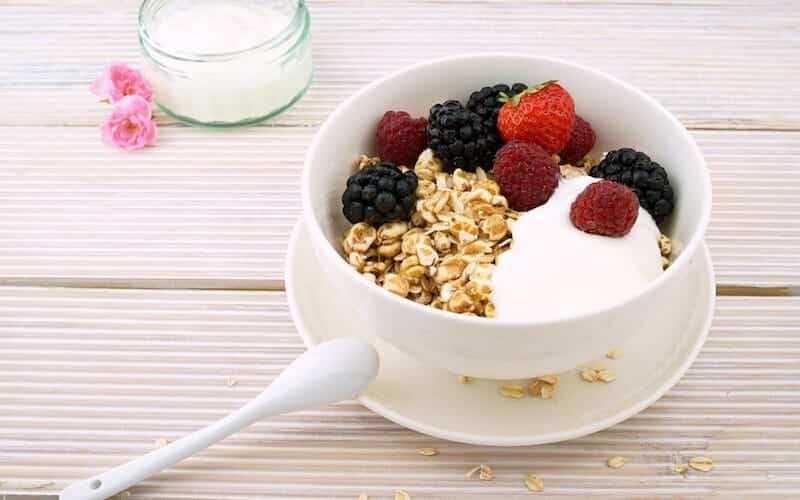Consider your reasons and the alternative sources calcium.
Dairy always seems to make the list of things to limit or eliminate in fad diets. It’s hard to know what to do because the science isn’t clear.
What is clear is that many Americans are not getting enough calcium in their daily diet and eliminating dairy can make it even harder to meet the Reference Daily Intake [RDI]. Vegans have a great risk of calcium deficiency. So if you’re thinking about eliminating dairy, consider your reasons for cutting dairy and the RDI of alternative sources of calcium first.
According to the US Food and Drug Administration, most adults need 1000 mg of calcium each day to maintain strong bones and teeth and to support other key functions.
Dairy + Calcium
Dairy products including milk, cheese and yogurt are some of the biggest sources of calcium and easiest to consume. In fact, you can meet the RDI by consuming 3 small servings throughout the day:
- One ounce of parmesan cheese has 33% of the RDI.
- One cup of plain yogurt contains 30% of the RDI.
- One cup of Milk contains 27-35% of the RDI depending on fat content.
Reasons to Limit Dairy
If you suspect you have a mild milk allergy or are lactose intolerant, there are dietary adjustments that can make consuming diary products more tolerable:
- Choose aged and hard cheeses [parmesan, swiss and cheddar] that are naturally lower in lactose than softer cheeses.
- Choose smaller servings of dairy. The smaller the serving the less likely it is to cause gastrointestinal problems.
- Save milk for mealtimes. Consume milk with other foods to slow the digestive process and reduce the symptoms of lactose intolerance.
Alternative sources of calcium
There are several other sources of calcium including:
1/ Dark green leafy vegetables [broccoli and kale] which have 4-9% fo the RDI.
2/ Fish with edible soft bones [sardines and salmon] which have 57% of the RDI.
3/ Calcium-fortified foods and beverages [soy products, cereal and fruit juices, and milk substitutes] which have 30 – 50% of the RDI.
Notice that plant based sources of calcium are much lower in value. Even for salad lovers, it would be hard to consume enough veggies to meet the RDI. Sardines and canned salmon, while good sources, are harder to incorporate into your diet on a daily basis.
Fortified Foods + Drinks
Fortified foods and drinks are good substitutes but don’t rely on fortified foods & drinks alone. Fortification is a process of adding vitamins and minerals to common foods to prevent nutrient deficiencies in populations. Reportedly, your body will process the vitamins and minerals added to food if your overall nutrition is good.
What does that mean? Overall nutrition means that you need to consume calcium as well as other essential vitamins and minerals from a variety of food to get the most health benefit.
Supplements
Food is the best source of vitamins and minerals. If you’re interested in supplementing your diet, look for products that are independently tested to ensure the supplements are safe and the claims are truthful. Supplements that bear the USP [US Pharmacopeial Convention], CL [Consumer Labs] or NSF [NSF International] abbreviation meet voluntary industry standards for quality, purity, potency, and tablet disintegration or dissolution.
Consult your doctor
Proper nutrition is so important for good health. Consult your doctor about signifiant dietary changes, especially when the science isn’t clear, to understand the impact to your health and to avoid unintended health consequences.
Contact Us
Please email us to request more information about our services and collaborations.
Stay Connected
Subscribe free to receive our latest tips, workouts, exclusive offers and community notifications every Monday. Read the Latest Newsletter.


